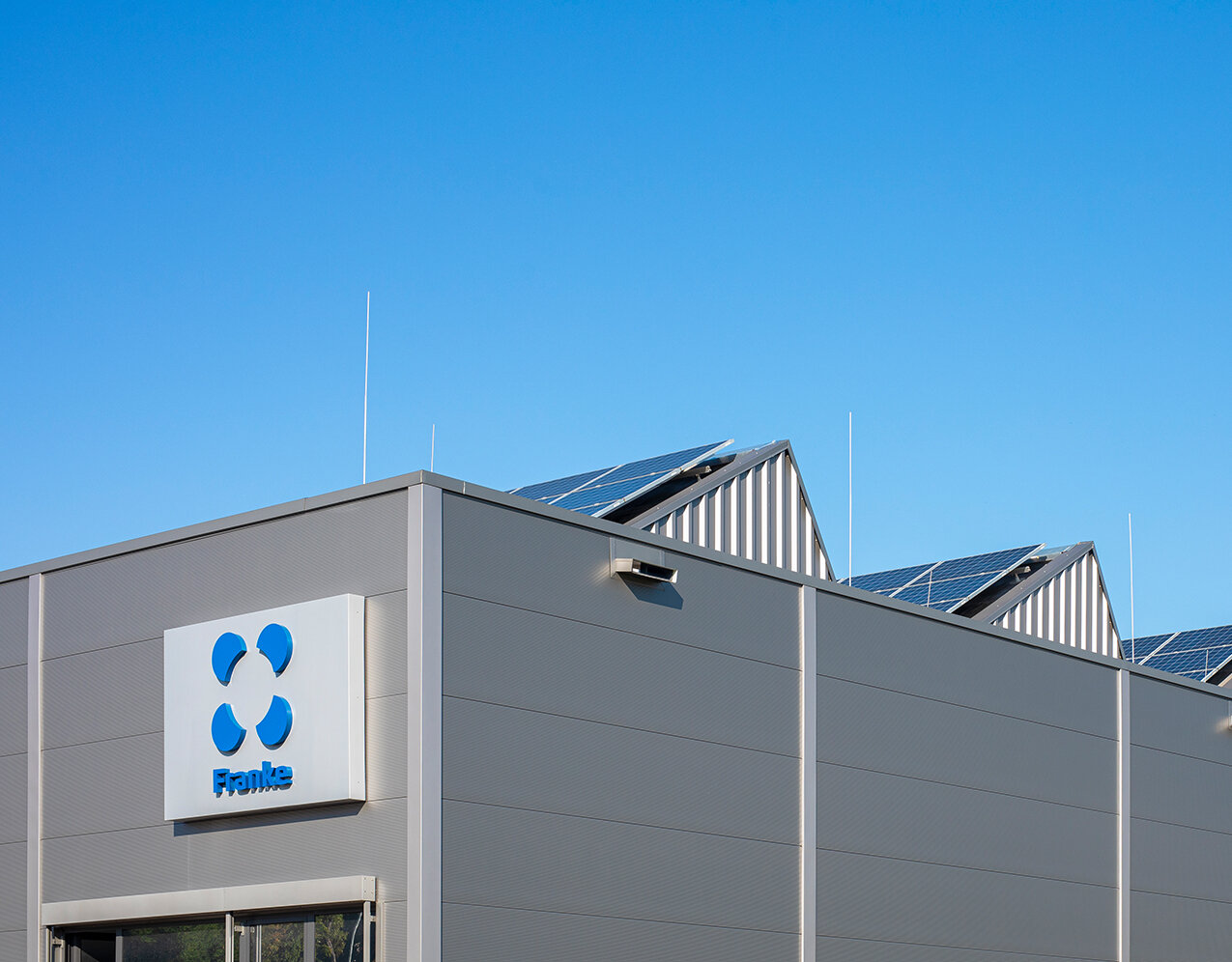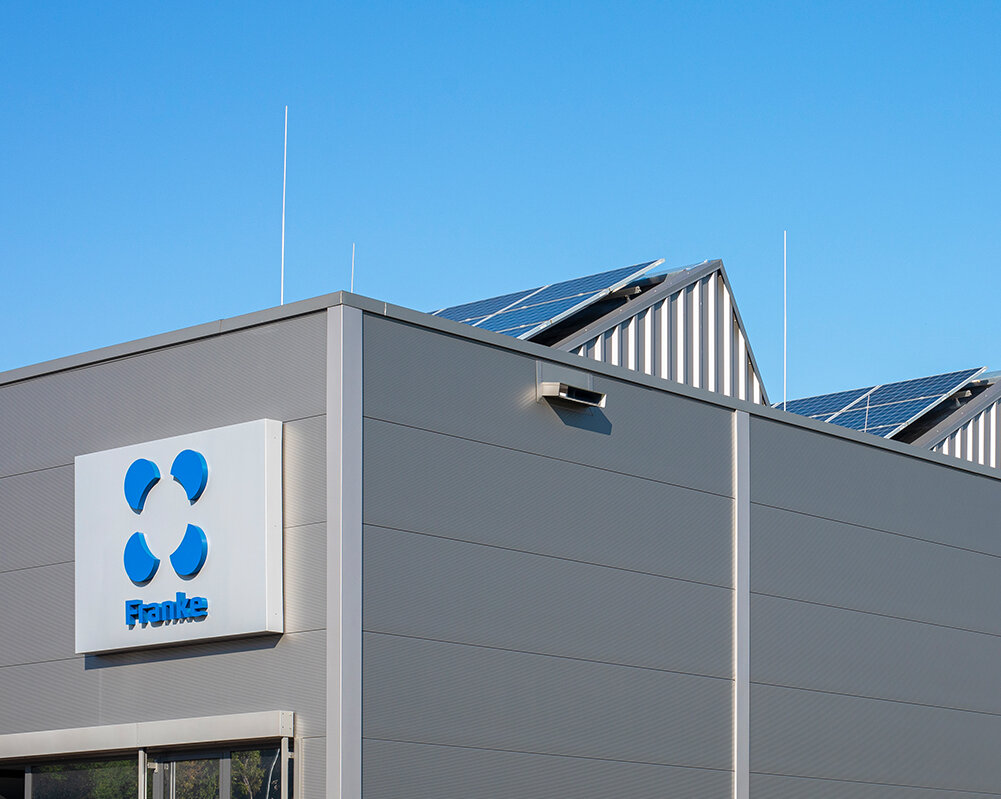
Ecology
Disposal, climate, environment
We firmly believe that it is essential to meet the needs of the present generation without compromising the opportunities and possibilities of future generations. That is why we strive to achieve a harmonious balance between the environment, society and the economy.
Disposal
Franke GmbH strives for a responsible use of resources that reduces the impact on the environment. For this purpose, the complete product life cycle is considered. Thus, products with a long life cycle are aimed at in order to avoid waste in the downstream value chain.
Waste generated in the company's own facilities is to be avoided as a matter of principle, but at least minimized. Managers are called upon to take this into account in product and production process planning, as well as in packaging planning. Any waste that does occur is separated and collected using a waste management system. This is followed by proper disposal by selected specialist companies. The absolute volume of waste has already been reduced sustainably in recent years.
Waste generation according to categories
| Businessyear | 2021 | 2022 |
| total waste | A341,2 | 302,2 |
| hazardous waste | 92,2 | 76,2 |
| non-hazardous waste | 249,0 | 226,0 |
| hazardous waste / sales [to / million €] | 16,9 | 11,2 |
| non-hazardous waste / sales [to / million €] | 3,5 | 2,1 |
Climate
Franke GmbH is aiming for CO2 neutrality by the year 2025. Initially for Scope 1 (direct emissions) and Scope 2 (indirect emissions from purchased energy), but not for Scope 3 (indirect emissions within the value chain), according to the GHG Protocol.
A determination of the greenhouse balance for the respective previous calendar year is carried out, which contains all relevant key figures, as well as the other associated topics in the area of climate protection, and the resulting potential measures.
The determination of the CO2-relevant key figures and the preparation of the greenhouse gas balance, which contains proposed actions for CO2 reduction, is carried out within the Energy Management Department. The base year for the greenhouse gas balance is 2021. The CO2 equivalents and their sources must be documented. The documented information greenhouse gas balance is based on DIN EN ISO 14064-1. With the new CSRD (Corporate Sustainability Reporting Directive) published in 2022, Franke GmbH will probably be obliged to prepare a sustainability report from 2025. This will then probably also have to include Scope 3.
The greenhouse gas balance sheet will be made accessible to any interested parties on request.
Quantified balance of greenhouse gas emissions
Air conditioning systems were not included in the Scope 1 determination. Franke is pursuing the goal of CO2 neutrality by 2025 for Scope 1 and 2 emissions. If not all CO2 emissions can be avoided, remaining CO2 emissions are to be offset.
CO2 emissions shown for 2023, 2024 and 2025 are based on estimates. The calculations for electricity emissions are based on emission factors from the energy supplier, the emission factor for natural gas and heating oil on data from the German Federal Environment Agency, and fuels on data from the German Federal Office of Economics and Export Control.
| Business year | 2021 | 2022 |
| CO2-Emissions [to] | 898 | 668 |
| Scope 1 | 363 | 171 |
| natural gas | 280 | 146,2 |
| heating oil | 82,9 | 24,3 |
| Scope 2 | 535 | 498 |
| Electricity | 514,2 | 481,9 |
| Fuels (vehicle fleet) | 21,1 | 16 |
| CO2‑emissions / sales [to / million €] | 16,9 | 11,2 |
| CO2‑emissions [to / employees] | 3,5 | 2,1 |
| CO2‑offsets [to] | 0 | 94,5 |
Additional information on relevant factors influencing greenhouse gas emissions
Heat recovery and photovoltaics offer us efficient options for sustainable energy optimization. With heat recovery systems, waste heat and process heat can be recycled to reduce heating energy and electricity costs. This not only leads to cost savings, but also to a significant reduction in CO2 emissions, which contributes to achieving climate targets.
Photovoltaic systems allow us to generate environmentally friendly electricity directly on site. The solar panels convert sunlight into electrical energy, reducing our dependence on conventional energy sources. By integrating photovoltaics, we can improve our energy balance and achieve long-term savings.


Actions
- Relocation of production to energy-efficient Plant 6 (Efficiency-House Level 40 - The code number 40 indicates that the efficiency-house requires only 40 % primary energy compared to a reference building (according to the Building Energy Act). In addition, the transmission heat loss is only 55 % of the reference building. The structural thermal insulation is thus 45 % better.), Plant 1 + 4 lower capacity utilization / use / consumption - 2024
- Heat recovery compressors plant 6 - 2024
- Heating renewal plant 2 (retrofit heat pump in plant 6) - 2024
- Expansion of LED lighting
- Reduction of production scrap
- For repairs, use e-motors instead of conventional motors
- Optimize compressed air network
- Check use of compressed air (e.g. only absolutely necessary pneumatic consumers, question the use)
- Energy efficiency measures Buildings Plant 1 + 4
- Install measurement strategy for consumption data to detect new efficiency measures and comply with ISO 50001
- Increase share of green electricity
- Switch to bio natural gas
- Successively convert carpool to e-mobility
- Additional PV systems (planned for plant 6 and new parking garage)
- Generate heat from electricity (heat pump technology)
- Replace refrigerants with climate-neutral cooling (efficient air conditioning units if necessary)
- Electric forklifts (operated with climate-neutral electricity)
